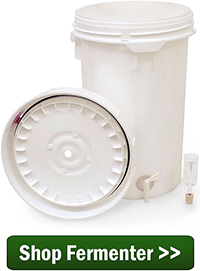 If you spend a significant amount of time homebrewing, you’re bound to come across a batch or two that just didn’t turn out as good as you’d hoped. Maybe the flavor is off or your bottles aren’t carbonated enough. Before you throw in the towel and call it quits, there may be something you can do to fix your home brew beer.
If you spend a significant amount of time homebrewing, you’re bound to come across a batch or two that just didn’t turn out as good as you’d hoped. Maybe the flavor is off or your bottles aren’t carbonated enough. Before you throw in the towel and call it quits, there may be something you can do to fix your home brew beer.
Read these tips below for some ideas on how to fix the occasional “off” home brew batch:
- Beer too flat? If you’ve bottled a batch of homebrew and found it’s too flat, you have several options to add more bubbles to your brew. First, move the bottles into a warmer area and give them some extra time to carbonate. If after a month or so they’re still not where you want them to be, you may be able to add some extra sugar to the bottles. Use your judgment to estimate how much additional priming sugar you need to add. Hopefully, you took notes on how you primed and can make an adjustment for next time.
- Beer too carbonated? Beer that gushes when you open it can be a nuisance – and it can be pretty embarrassing if you’re trying to impress some friends! The best way to try to fix this home brew problem is to try is to get the bottles extra cold before opening. Either stick them in the freezer for a few minutes or put them in an ice bath. Once they’re ice cold, carefully open the bottles over the sink. If you still get a gusher, you can pour the beer into a pitcher to allow the foam to settle down.
- Beer too bitter? If you’ve brewed a beer that’s too bitter, it may just need some time to age. Set it aside for a month or so. The extra time can go a long ways towards getting rid of the green beer taste. As a last resort, you can blend the beer with something less bitter to bring it into balance.
 Beer too sour? Unless you’ve deliberately brewed a sour beer, there’s not much you can do to “fix” a home brew beer that’s gone sour from infection. If you catch it early enough though, you may be able to save it. If you catch it before bottling, you can easily dose the beer with Campden tablets. Otherwise cold crash the beer to slow any microbial growth and drink quickly. Or maybe just embrace the fact that you’ve brewed your first sour beer!
Beer too sour? Unless you’ve deliberately brewed a sour beer, there’s not much you can do to “fix” a home brew beer that’s gone sour from infection. If you catch it early enough though, you may be able to save it. If you catch it before bottling, you can easily dose the beer with Campden tablets. Otherwise cold crash the beer to slow any microbial growth and drink quickly. Or maybe just embrace the fact that you’ve brewed your first sour beer!
- Beer too sweet? First we need to identify why the beer is too sweet. Was it a stuck fermentation? Maybe you can add more yeast. Or was it a problem with recipe formulation? Maybe the beer has too much lactose or caramel malt? Blending the beer with a drier batch could help balance it out. Either brew a new batch of the same beer, or try blending the beer in the glass with a complementary beer style. (Black and tan, anyone?)
- If at first you don’t succeed… If after doing everything you can to save an “off” batch, the beer still doesn’t stack up to your expectations, it may just be time to scrap the batch and try a new one. Remember that each batch is a learning experience. You’re unlikely to repeat the same mistake again, so keep calm and brew on!
The point here is not to get too bent out of shape if your home brew doesn’t come out as planned. Take a deep breath is see if there is any way of fixing your home brew beer.
—–
David Ackley is a writer, brewer, and craft beer marketing consultant. He holds a General Certificate in Brewing from the Institute of Brewing and Distilling.
